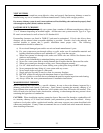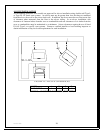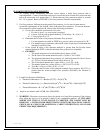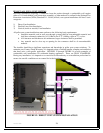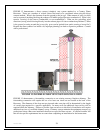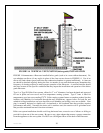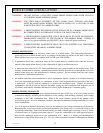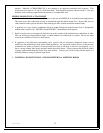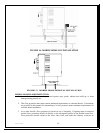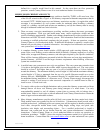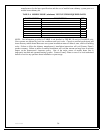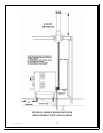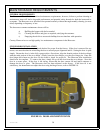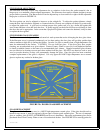
Version 2.0b 32
MOBILE HOME INSTALLATION
WARNING: DO NOT INSTALL A COUNTRY FLAME FREESTANDING HARVESTER STOVE IN
ANY MOBILE HOME SLEEPING ROOM.
WARNING: THE STRUCTURAL INTEGRITY OF THE FLOOR, WALL, CEILING AND ROOF
MUST BE MAINTAINED DURING THE INSTALLATION OF A COUNTRY FLAME
HARVESTER STOVE IN A MOBILE HOME.
WARNING: A FREESTANDING HARVESTER STOVE INSTALLED IN A MOBILE HOME MUST
BE COMPLETED IN ACCORDANCE WITH 24 CFR, PART 3280 (HUD).
WARNING: A FREESTANDING HARVESTER STOVE MUST HAVE ITS LEGS OR PEDESTAL
PERMANENTLY BOLTED TO THE FLOOR OF THE MOBILE HOME. FIGURE 10
shows a leg option installation and FIGURE 11 shows a pedestal option installation.
WARNING: A FREESTANDING HARVESTER STOVE MUST BE ELECTRICALLY GROUNDED
TO THE STEEL FRAME OF A MOBILE HOME.
MOBILE HOME RULES
1. Install only a HUD-approved laboratory tested stove in a mobile home. The freestanding Harvester is
approved for use in mobile homes and is so certified on the metal tag affixed to the back of the stove.
Install all Harvester stoves in accordance with 24 CFR, part 3280 (HUD).
2. A permanent (hard line) combustion fresh air duct system must be installed and connected from the
outside of the mobile home directly to the combustion air inlet on an Harvester stove.
3. A Harvester stove must have a UL Listed prefabricated vent system installed in the mobile home. This
chimney system must be properly connected and installed directly from the stove through the roof of the
mobile home using only one manufacturer’s chimney products. Do not deviate from the vent system
manufacturer’s installation instructions.
4. All mobile home Harvester installations or stove replacements require a permit to be obtained from the
local code department and require, as a minimum, at least a final inspection before operation of the stove
is authorized. Use only licensed contractors to perform the installation work. Further, an insurance
representative should provide an approval document stating that the installation and inspection are in
accordance with industry standards and therefore covered by the homeowner’s insurance policy.
MOBILE HOME CLEARANCES
1. Clearance is defined as the open space distance between any part of the stove or its vent system and any
combustible material, including but not limited to: walls, ceilings, trim moldings, furniture, word storage
containers, or any other combustible item. Refer to the stove clearance section of this manual or the
certification tag on a stove for minimum clearances that must be maintained during installation of a stove
into a mobile home.
2. Use of an approved thermal barrier may allow for the reduction of no barrier minimum stove clearances.
Remember that a wall (wood studs covered with sheetrock, even if that wall is covered with brick) is still
considered combustible. Functional thermal barriers are made of hearth pads consisting of two ¼” sheets
of mineral board or 24-guage sheet metal spaced 1” from the combustible wall, with approved spacers
that provide additional protection to the combustible wall. Refer to a hearth pad manufacturer’s
instructions or the NFPA Publication 211. Do not violate minimum clearances with approved thermal




